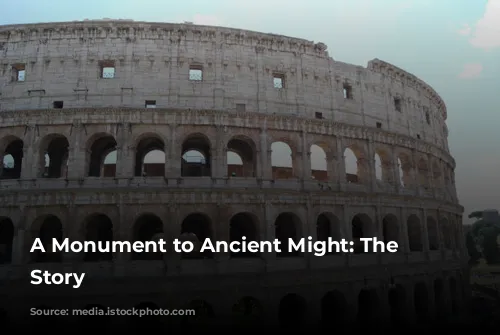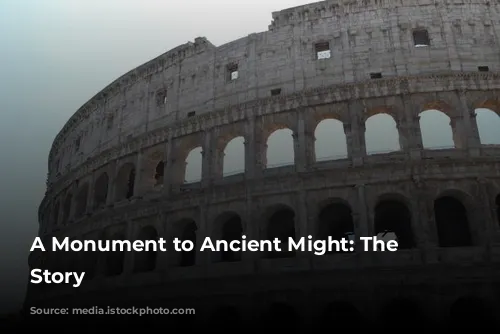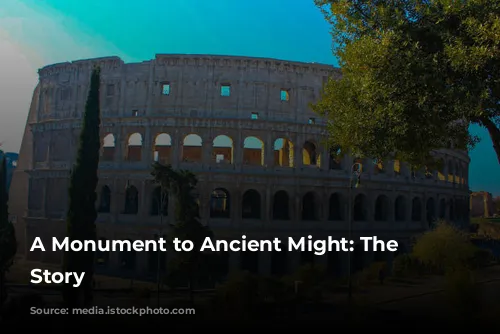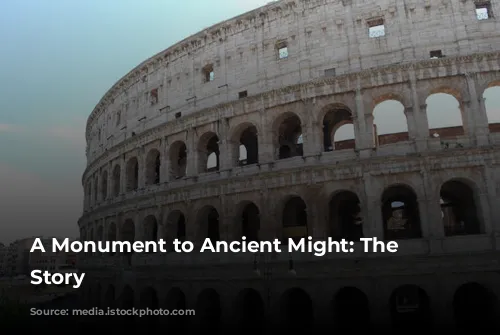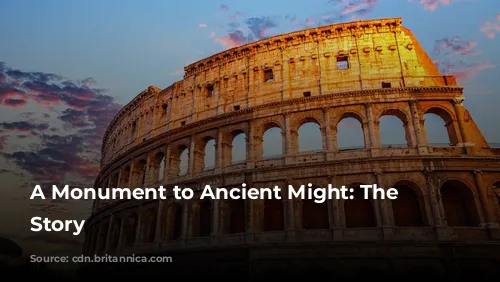The Colosseum, a testament to the architectural and engineering brilliance of ancient Rome, stands as one of the few largely intact structures from that era. This architectural marvel also serves as a major source of tourism revenue for the Italian government. In 2018, the Colosseum, Roman Forum, and Palatine Hill generated over $63.3 million (€53.8 million), making it the highest-earning tourist attraction in Italy.
(This introductory paragraph highlights the Colosseum’s historical significance and its present-day economic impact.)
A Tale of Rise and Fall
The Colosseum’s journey has been marked by both glory and neglect. After the decline of the Western Roman Empire, the arena fell into disrepair. The Frangipane and Annibaldi families, powerful Roman families, transformed the Colosseum into a fortress in the 12th century. Later, in the late 15th century, Pope Alexander VI allowed the Colosseum to be used as a quarry, stripping it of its valuable materials. This period of neglect lasted for over a thousand years. Thankfully, state-funded restoration efforts began in the 1990s, breathing new life into this ancient wonder.
(This section narrates the Colosseum’s decline after the fall of the Roman Empire and its subsequent revival through restoration efforts.)
Born from Conquest and Dedicated to Entertainment
The Colosseum’s construction was driven by an imperial ambition to revive Rome after the turbulent “Year of the Four Emperors” in 69 CE. Emperor Vespasian, known for his practical and strategic approach, envisioned the Colosseum as an entertainment hub for the Roman people. Inspired by other amphitheaters, the Colosseum was designed to host gladiatorial combat, animal hunts, and even mock naval battles.
(This section delves into the reasons behind the Colosseum’s construction and its intended purpose as a venue for grand spectacles.)

A Legacy Built on Labor and Plunder
Construction of the Colosseum began under Emperor Vespasian’s reign, between 70 and 72 CE. The finished structure was dedicated in 80 CE by his son and successor, Titus. The Colosseum’s fourth story was added in 82 CE by Emperor Domitian. It’s important to note that the construction of this magnificent structure was funded by the spoils of war from Titus’s sack of Jerusalem in 70 CE. Sadly, the labor force for this project consisted of enslaved Jews from Judea.
(This section discusses the Colosseum’s construction timeline and reveals the darker side of its construction, highlighting the use of enslaved labor and the exploitation of conquered people.)
A Colossal Structure for Colossal Events
The Colosseum, also known as the Flavian Amphitheatre, is an elliptical structure built from stone, concrete, and tuff. Standing four stories high, it measures 620 by 513 feet (189 by 156 meters) and had a capacity of 50,000 spectators. This massive structure, famously used for gladiatorial combat, served as a central stage for the Roman people’s entertainment.
(This section describes the Colosseum’s physical characteristics, including its size, materials, and capacity, emphasizing its importance as a venue for gladiatorial battles.)
A Symbolic Shift: From Tyrant’s Lake to Public Arena
The Colosseum’s location holds symbolic meaning. Built on the grounds of Emperor Nero’s Golden House, it replaced Nero’s artificial lake, a symbol of the tyrant’s extravagance. Vespasian, whose rise to power was less ostentatious, chose to replace the lake with a public amphitheater that could host thousands of Romans, marking a symbolic shift from personal indulgence to public enjoyment.
(This section explores the symbolic significance of the Colosseum’s location, highlighting the contrast between Nero’s extravagance and Vespasian’s focus on public engagement.)
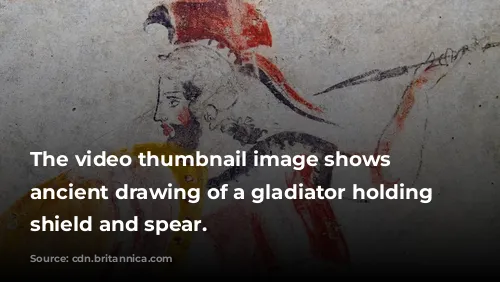
A Monument to Engineering and Architectural Prowess
Unlike earlier amphitheaters, which relied on hillsides for support, the Colosseum stands as a freestanding structure made of stone and concrete. Its construction involved a complex system of barrel vaults and groin vaults. The Colosseum’s three lower stories are adorned with arcades framed by engaged columns, following the Doric, Ionic, and Corinthian orders. This rising arrangement of columns became the inspiration for the Renaissance codification of architectural orders. The Colosseum’s primary structure is made of travertine, while volcanic tufa forms the secondary walls. Concrete was used for the inner bowl and the arcade vaults.
(This section discusses the Colosseum’s innovative construction methods and its architectural features, highlighting its structural complexity and its influence on later architectural movements.)
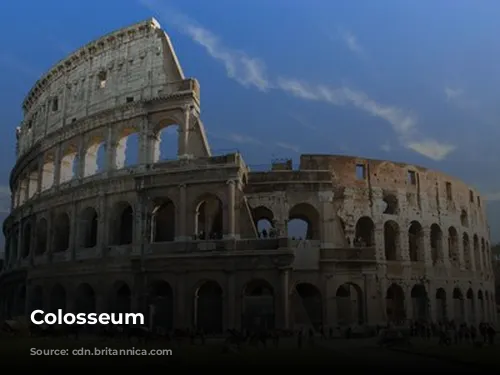
Protecting the Spectators from the Elements
The Colosseum’s seating capacity was 50,000 spectators who enjoyed protection from the sun thanks to a massive retractable velarium (awning). This awning was supported by masts extended from corbels built into the Colosseum’s top story. Hundreds of Roman sailors were needed to manipulate the velarium’s rigging, extending and retracting it as needed.
(This section details the practical features of the Colosseum, including its seating capacity and the retractable awning designed to shield spectators from the sun.)
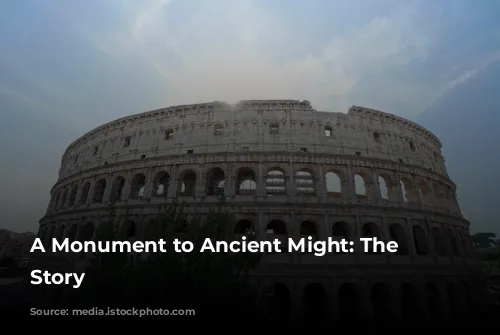
A Stage for Blood and Spectacle
The Colosseum witnessed thousands of hand-to-hand combat between gladiators, battles between humans and animals, and even mock naval engagements. While the exact location of early Christian martyrs remains uncertain, the Colosseum’s history is undeniably intertwined with both violent entertainment and religious persecution.
(This section describes the diverse spectacles held within the Colosseum, highlighting the brutality and the role of religious persecution in its history.)
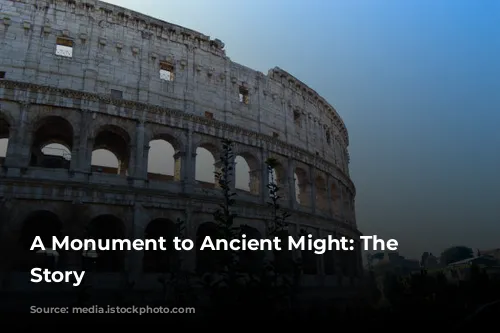
From Glory to Neglect to Restoration
In the Middle Ages, the Colosseum was repurposed as a church, then a fortress by the Frangipane and Annibaldi families. It suffered damage from lightning, earthquakes, vandalism, and pollution. The marble seats and decorative materials were plundered over centuries, reducing the Colosseum to a quarry. Fortunately, preservation efforts began in earnest during the 19th century, with notable contributions from Pius VIII, followed by a full-scale restoration project in the 1990s.
(This section details the Colosseum’s journey through the Middle Ages, describing its use as a church and a fortress, its decline due to neglect and vandalism, and its eventual restoration efforts.)
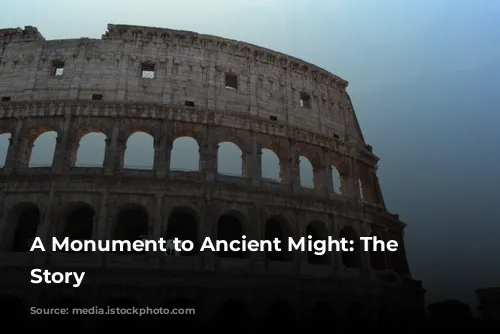
An Enduring Symbol
Today, the Colosseum remains one of Rome’s top tourist attractions, drawing close to seven million visitors annually. It continues to captivate visitors with its history, architectural brilliance, and enduring power as a symbol of ancient Rome’s grandeur.
(This concluding paragraph summarizes the Colosseum’s enduring appeal as a tourist destination and its lasting importance as a symbol of ancient Rome’s strength and resilience.)
